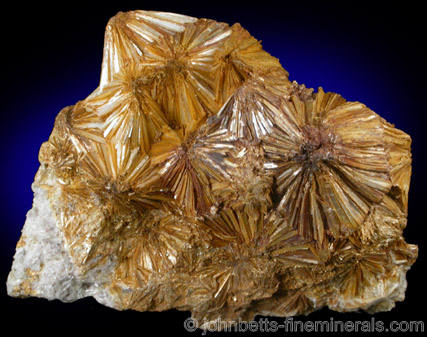The Mineral pyrophyllite

Pyrophyllite is isomorphous with the common mineral Talc, but has aluminum in place of the magnesium. It is very similar to Talc, with very similar properties and habits. However, it has distinct radiating crystal aggregates which easily identify it. Pyrophyllite is named after the Greek words "pyr" - "fire" and "phyllon" - leaf, regarding its property to exfoliate into fan shapes upon heating.
Chemical Formula
Al2Si4O10(OH)2
Color
White, light green, apple-green, gray, yellow, brown, light blue
Crystal System
Monoclinic
Crystal Habits
In dense masses of radiating crystals, often in the shape of interconnected fans. Also in compact veins, and in radial balls and rosettes. Usually in massive, compact form, with distinct radiating crystals visible.
Uses
Pyrophyllite is used for ceramics, in paints, insecticides, and in the production of rubber. It is also used as a minor ornamental stone for carvings and sculptures.
Noteworthy Localities
Localities where good Pyrophyllite specimens have come from are limited. Radiating yellow sprays come from Gundagai, New South Wales, Australia; and Monte Folgorito, Pietrasanta, Tuscany, Italy. Light green Pyrophyllite was found in St Niklaus, Zermatt-Saas Fee area, Valais, Switzerland.
In the U.S., North Carolina has produced some of the finest collectible examples of this mineral. Localities include Staley, Randolph Co.; Hillsboro, Orange Co.; the Snow Camp Mine, Alamance Co.; and Cotton Stone Mountain, Troy, Montgomery Co. Dense sprays of large Pyrophyllite crystals have come from Graves Mountain, Lincoln Co., Georgia; and golden-brown interconnected radial sprays associated with Rutile from the Champion Mine, White Mountains, Inyo Co., California.
Distingushing Similar Minerals
Talc - Slightly softer, lacks distinct crystal habits of Pyrophyllite. Massive Talc and Pyrophyllite can be very difficult to distinguish.
Wavellite - Greater hardness, different mode of occurrence.